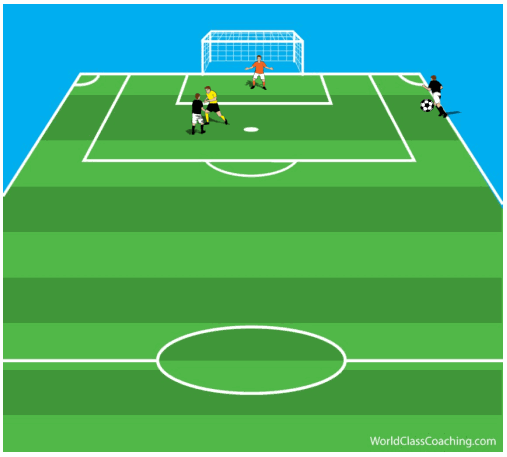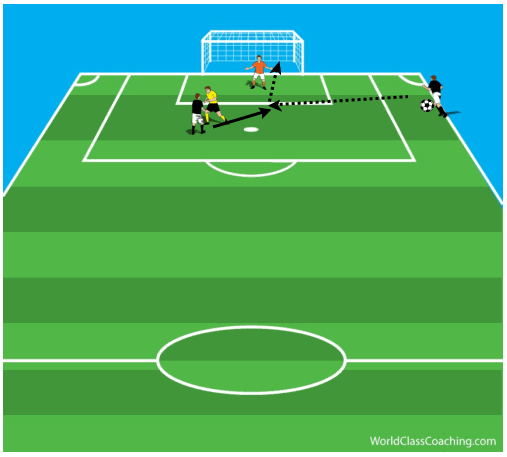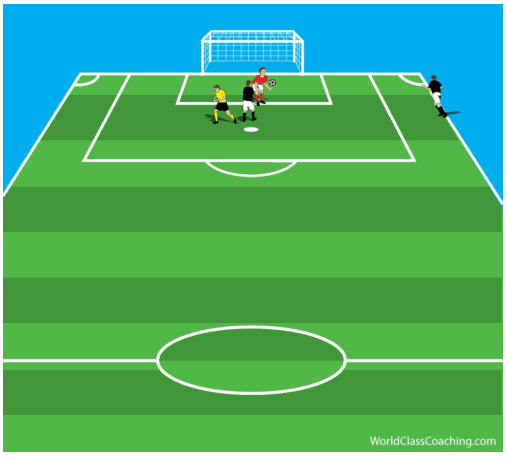Welcome to the Goalkeeping Newsletter. Today’s topic addresses the issue of applying pressure on crosses.
One of the general rules I use with keepers is the sure rule. If a keeper is sure he can get his body behind the ball, he doesn’t have to dive. If he isn’t sure, he needs to dive to get behind the ball. If a keeper is sure he can catch a low shot to the corner, he should catch it. If he isn’t sure, he should parry the ball away. If a keeper is sure he can catch a cross, he should catch it. If he isn’t sure he can catch the ball, he should punch it away.
Crosses are one instance where we might need to make an exception to the rule. If a cross is played in and the keeper is sure he can get to the ball (either to catch it or punch it) he should do so. However , even if a keeper isn’t sure he can get to a cross there are times he should come out to pressure.
As an example, in the diagram below the black team has the ball out wide with one runner and a defender in the box.

If the runner gets ahead of the defender and the ball is crossed in well, it’s an extremely difficult situation for the keeper.

If the keeper feels he can get to the ball, he would go

However, if the keeper doesn’t think he can get to the ball and chooses to stay back, it makes for an easy finish by the attacking player.The alternative is for the keeper to come out and put as much pressure on the attacking player as possible. By coming out this way, it takes time away from the attacking player, cuts down the angle and puts additional pressure on the attacker. It doesn’t guarantee the attacker doesn’t score but it will decrease their chances.
Have a great day!
Lawrence


